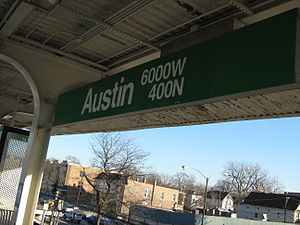
The lack of investment in Chicago’s most-populated and largely African-American was a hot topic last week as West Side police met with members of the community for their monthly faith-based gathering at the 15th District headquarters.
“We don’t have an economic driver in the African-American community,” said Malcolm Crawford, executive director of the Austin African American Business Networking Association.
“Austin has the largest population of African Americans in the city of Chicago, yet we don’t have a place to come and spend our money.”
Crime and economic development have continued to be large concerns for Austin residents. But concern rose at the March 1st meeting among the room full of residents and community leaders pondered whether the city has given up their neighborhood.
“One of the things that the [past] Department of Planning commissioner said was that you can’t sell Austin right now,” Crawford said. “Austin is sold as a place that you just live.”
In comparison with other communities, like Chinatown and Greektown, Austin has seen little to no funding over the past few years, Crawford said.
In February, Mayor Rahm Emanuel asked to borrow $3.65 billion, and $1.65 billion was set aside for infrastructure and capital improvements throughout the city of Chicago, said Ald. Chris Taliaferro, who also attended last week’s meeting. However, no money was provided to Austin.
“None of that [money] was earmarked for Austin,” Taliaferro said.
Over the years, Austin has gained the reputation of being one the the more dangerous neighborhoods in Chicago. For the past few years, more homicides have occurred in Austin than many other Chicago neighborhoods.
“We’ve had 14 homicides already this year,” Taliaferro said. “We’re leading the city again. We led the city in homicides last year.”
Austin’s next door neighbor, Oak Park, claims a majority of Austin’s potential business; residents leave the neighborhood to shop, eat out and have fun. The city hasn’t tried to sell Austin the last 10 years, Taliaferro said.
Austin can be sold, but the mayor and the head of Chicago’s Department of Planing and Development simply don’t want to, the 29th Ward alderman said.
“Eighty-five percent of the disposable income of Austin goes to Oak Park without Oak Park having to do anything but just take the money,” Crawford said.
On top of the lack of economic growth, Austin may also be facing a lead problem similar to Flint, Michigan’s, infamous crisis.
Ald. Emma Mitts, Chicago’s 37th Ward alderman, said a recent Tribune article (here’s another) warned Chicago’s drinking water may contaminated with lead.
“As we’re talking about the water in Flint, I’m telling you we have water here just as bad,” Mitts said.
According to a map of Chicago, water in Austin and the 37th and 29th wards appears to have the highest amounts of lead, Mitts said.
However, the issue has flown under the radar because testing for contamination was only conducted on the far North and South sides of Chicago, not the West Side. There was also a discrepancy in the houses that were tested, said Anthony Beckham, community outreach coordinator for Cook County Commissioner Richard Boykin.
“The houses that were tested for lead were employers of the city of Chicago,” Beckham said. “So obviously, their houses are not going to have issues.”
In response to the water issue, Taliaferro and Boykin will host a a water safety town hall meeting this Thursday, March 10 at Home of Life Church, 4650 W. Madison. The event starts at 6 p.m., and will feature presentations from the Metropolitan Water Reclamation District of Greater Chicago and the city of Chicago.
“We are going to get to the bottom of this because we don’t want a Flint in Chicago,” Beckham said.